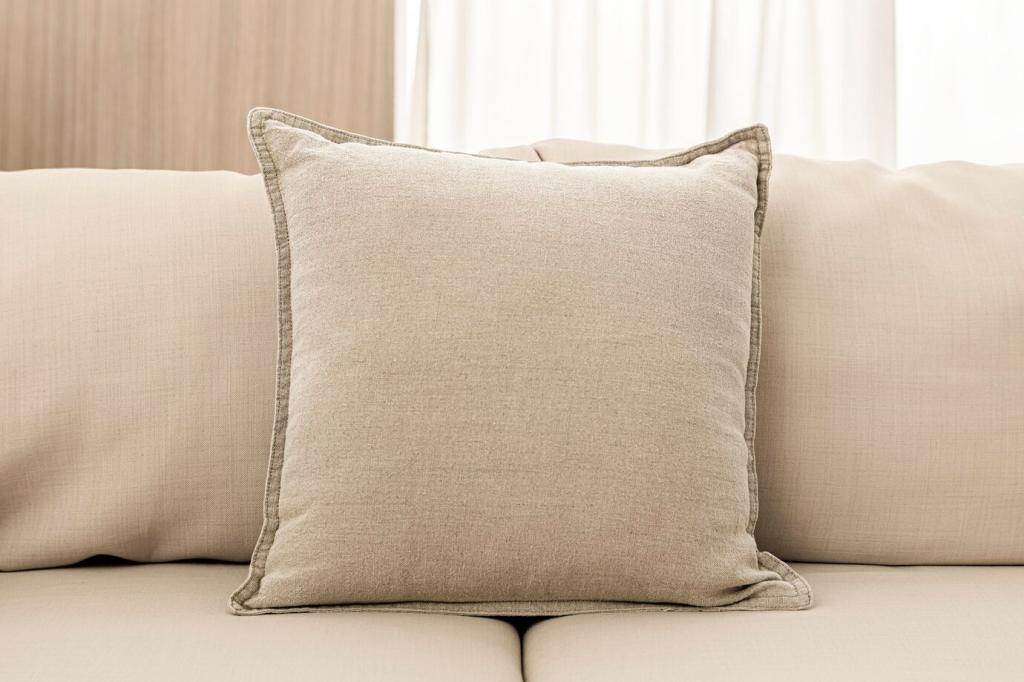
Innovative Eco‑Materials: The New Paradigm in Sustainable Furniture
Chosen theme: Innovative Eco‑Materials: The New Paradigm in Sustainable Furniture. Step into a world where design, science, and stewardship converge. We explore breakthrough materials that reduce waste, honor resources, and reshape how we sit, store, lounge, and live. Subscribe and join the conversation if you believe furniture should feel good for you and the planet.
Why Eco‑Materials Are Redefining Furniture
From Waste to Wonder: Materials Reborn
Designers are turning agricultural byproducts, ocean plastics, and post‑consumer fibers into beautiful, long‑lasting furniture. What once clogged landfills can now frame a chair or top a table, proving that sustainability is a creative engine, not a constraint.
Measuring Impact, Not Hype
Life cycle assessment reveals the real environmental story behind furniture. By tracking carbon, water, and toxicity from raw material to end‑of‑life, we move beyond buzzwords and invest in materials that demonstrably reduce harm without compromising performance.
A Workshop Anecdote That Changed Everything
A small studio replaced conventional MDF with a low‑tox binder panel made from straw. Dust levels dropped, finishing was cleaner, and customers noticed fewer odors. That single switch reshaped their sourcing policy—and their audience grew through word of mouth.

Mycelium: Growing the Future of Seating and Storage
Mycelium feeds on agricultural waste, binding fibers into a lightweight, rigid form. After growth, heat halts further development, locking strength in place. The result is a natural composite that sidesteps toxic resins and heavy manufacturing footprints with elegant simplicity.
Mycelium: Growing the Future of Seating and Storage
Beyond structure, mycelium offers sound dampening and thermal insulation, making it ideal for panels, stools, and side tables. Designers report warm tactility and calming room acoustics, adding sensory value alongside sustainability—an underappreciated benefit in minimalist interiors and busy offices.


Recycled and Bio‑Based Polymers With Purpose
01
Chairs molded from recycled PET bottles and intercepted ocean plastics turn a pollution problem into practical seating. Look for verifiable supply chains and third‑party audits to ensure claims hold up, and favor mono‑material shells for easier future recycling.
02
Bio‑based polymers can cut reliance on fossil feedstocks, yet performance and end‑of‑life pathways vary. Designers balance heat resistance, durability, and composting realities, often pairing biopolymers with modular parts to enable repair rather than premature replacement.
03
Surface textures, coatings, and material choices influence particle release during use. By choosing denser grades, rounded edges, and durable finishes, makers reduce shedding. Customer education on gentle cleaning methods further minimizes microplastic creation throughout the product’s lifespan.
Fast‑Growing Natural Fibers: Bamboo, Hemp, and Flax
Agronomy Advantages and Soil Health
Hemp and flax thrive with modest inputs, support crop rotation, and enrich soils. Bamboo regenerates quickly without replanting. These agricultural wins translate into materials with reduced resource intensity, aligning farm stewardship with furniture that carries a lighter environmental load.

Healthy Binders, Adhesives, and Finishes

Soy‑based, lignin‑enhanced, and MDI‑bonded panels cut hazardous emissions while maintaining structural integrity. When paired with recycled fibers, they create robust substrates for cabinetry and shelving without the indoor air quality compromises that plagued earlier, conventional engineered boards.



